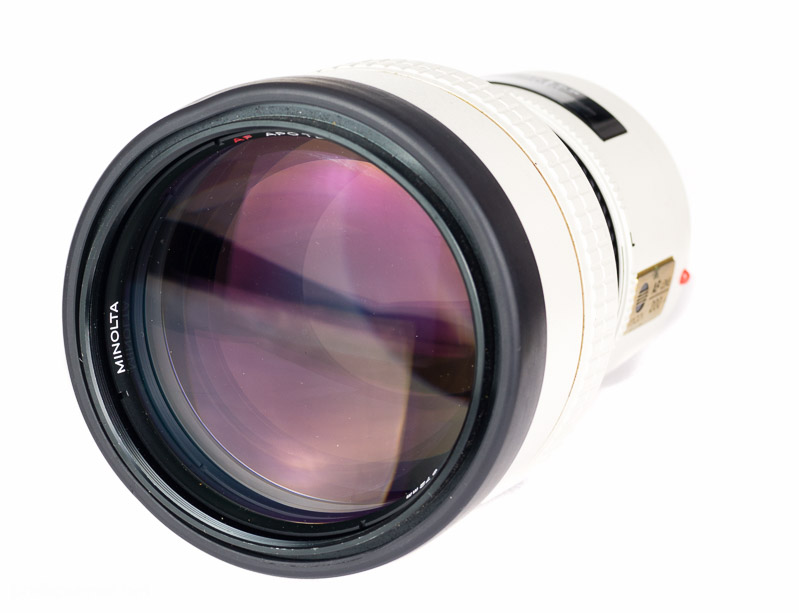 The Minolta AF 2.8/200 has the reputation to be one of the best if not the best lens Minolta ever made. In this review I check if it still can keep up with the Sony a7II 30 years after it’s introduction.
The Minolta AF 2.8/200 has the reputation to be one of the best if not the best lens Minolta ever made. In this review I check if it still can keep up with the Sony a7II 30 years after it’s introduction.
Sample Images
Just click on any image to get to the full resolution version.
Specifications
-
- Diameter: 86 mm
- Length: 134 mm
- Weight: 790 g
- Filter Diameter: 72 mm
- Number of Aperture Blades: 9
- Elements/Groups: 8/7
- Close Focusing Distance / reproduction ration: 1.5 m / 1:6.2
- Mount: Minolta/Sony A
This lens was kindly borrowed to us from our reader David.
The Minolta AF 2.8/200 usually sells for around $550 used at ebay.com (affiliate link).
In Germany you can buy it used for around 700€ at ebay.de (affiliate link).
Versions
There were three, optically identical, versions of this lens.
- The first version you see in my images, released in 1986.
- The second HS version which offered faster AF and a focus stop button, released in 1988. This version has “High Speed AF APO 200mm” written on the lens shade.
- For some time the first version could be updated with the faster gears of the second version, AF speed of updated lenses will be the same as with the second version but it lacks the AF-stop button.
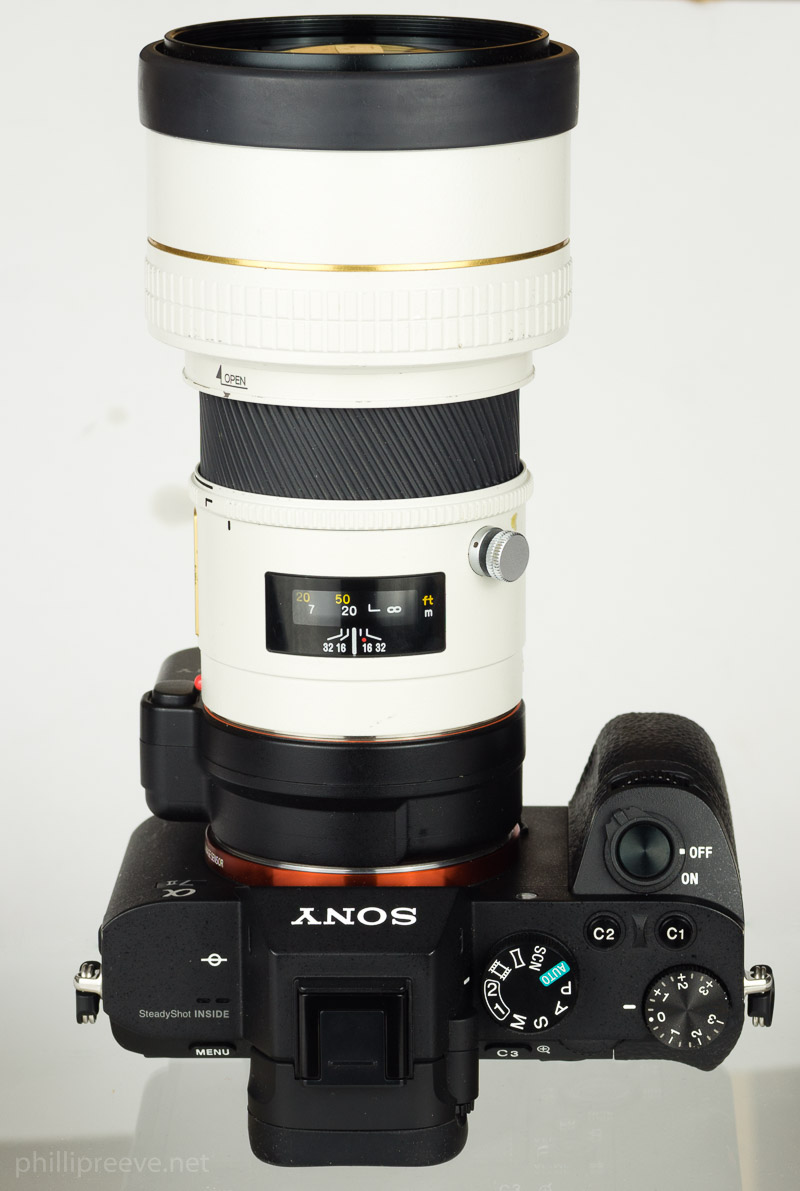
Build Quality and mechanical design
The Minolta AF 2.8/200 is a very cleverly designed lens. It feels very solid because it has an all-metal housing and everything fit’s tightly.
The focusing ring is turned by the camera if you use AF, to focus manuall you need to switch the camera to manual focus and I would recommend to dedicate a button to the AF/MF switch.
It also has a variable focus limiter and you can limit the AF to either 1.5m to any distance you like or from any distance you choose to infinity. I have never before seen such a design but after you have figured out how it works it works well.
Size, Weight and Handling
For a 200mm lens the Minolta actually isn’t very large but still it is a big lens and you should support it with your left hand.
This is an AF lens and because of that the focusing ring turns only about 120 degrees from 1.5 m to infinity, it has very little resistance and a small amount of play but it is quite grippy. With some practice I managed to get consistent results focusing the lens manually but it wasn’t a very pleasant experience.
An interesting feature of the Minolta AF 2.8/200 is that you can slide a small tube over the AF ring so you don’t accidentally get you fingers in it.
The Minolta uses an IF-design so it doesn’t extend when focused closer.
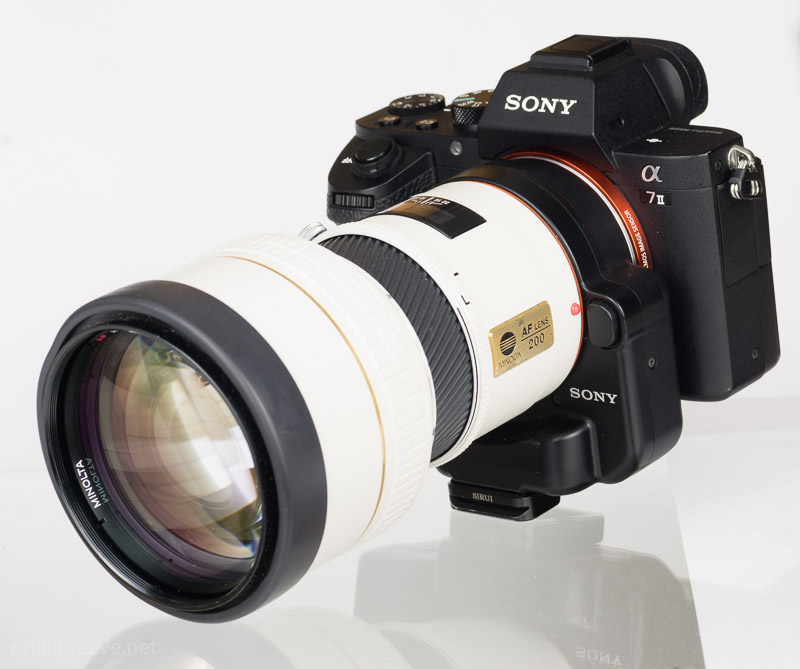
You control the aperture trough the camera and the aperture is only closed the moment you hit the shutter which causes a small delay if you stop the Minolta down. On the second generation of Alphas the image stabilizer is automatically set to 200mm which saves you some time compared to manual lenses.
Auto Focus
The Minolta AF 200mm 1:2.8 APO employs a screw drive AF system, so in order to get AF on the Sony a7 series you need to use an LA-EA4 adapter.
AF with the LA-EA4 is very fast (and a bit noisy). My results were not very consistent though. Sometimes it worked very precisely and other times focus was off by quite a bit. I didn’t investigate this too far and just used manual focusing.
Lens Hood
The Minolta AF 200mm 1:2.8 has a very handy, integrated lens hood which is solid, effective and not annoying to handle.
Filters
The 72 mm filter thread is made from metal.
The front of the lens does not rotate so polarizers are easy to use.
Image Quality
Vignetting
At f/2.8 vignetting is moderate at about 1.3 stops, and barely noticeable (below 0.5 stops) from f/4.
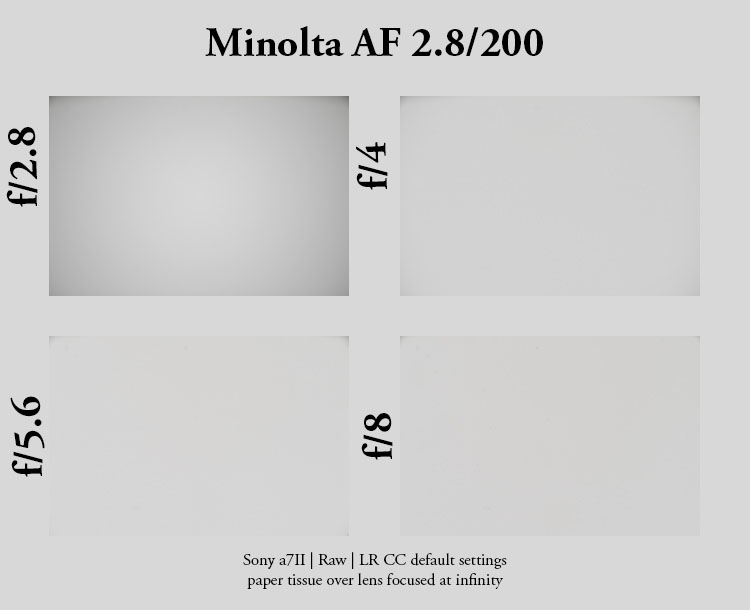
Flare Resistance
The flare resistance is good but not flawless. Usually you are fine but it won’t stand up to direct sunlight.
Distortion
Only the slightest amount.
Chromatic Aberrations
Lateral CA is correction is good but not perfect.
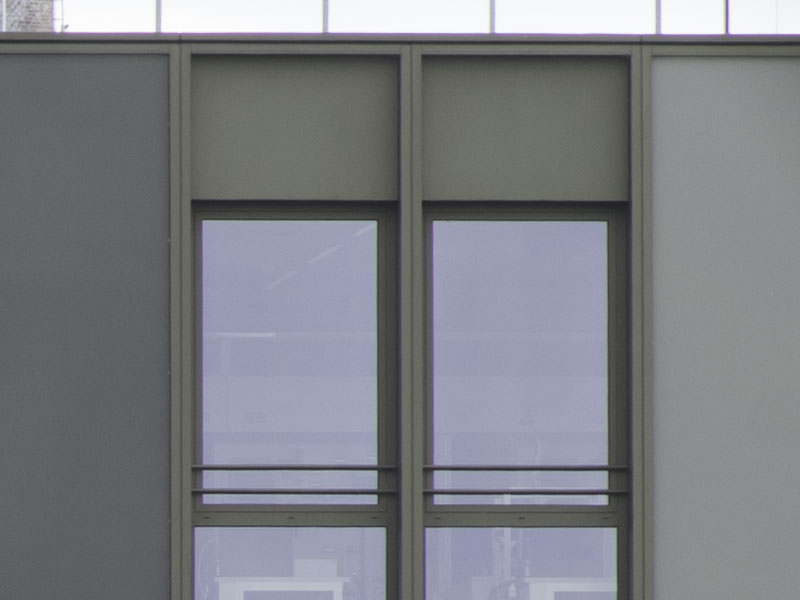
Axial CA is well corrected for a 200mm lens but the correction isn’t perfect.
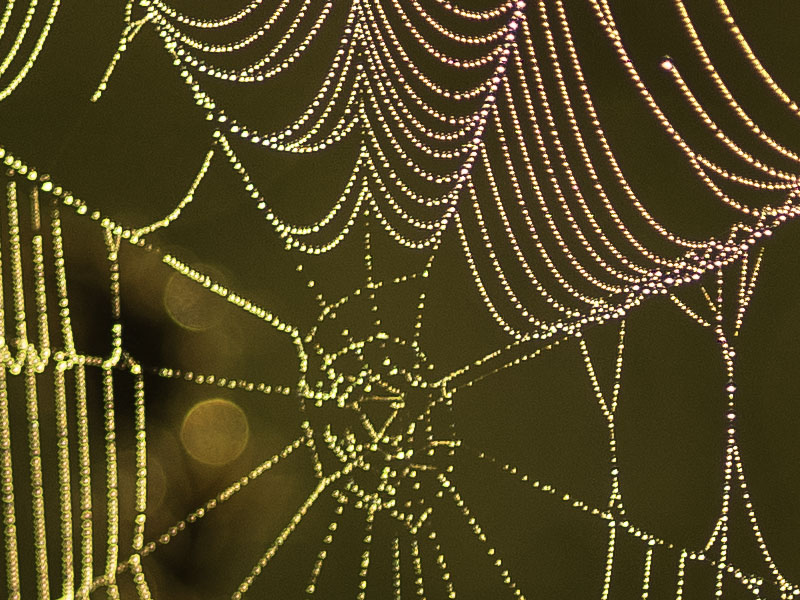
Because of the APO name I would have expected a bit more but it is still a good performance for a 2.8/200. Have a look at Bastian’s 200mm comparison to see how a truly apochromatic lens performs.
Bokeh
I found the Minolta’s bokeh to always be very smooth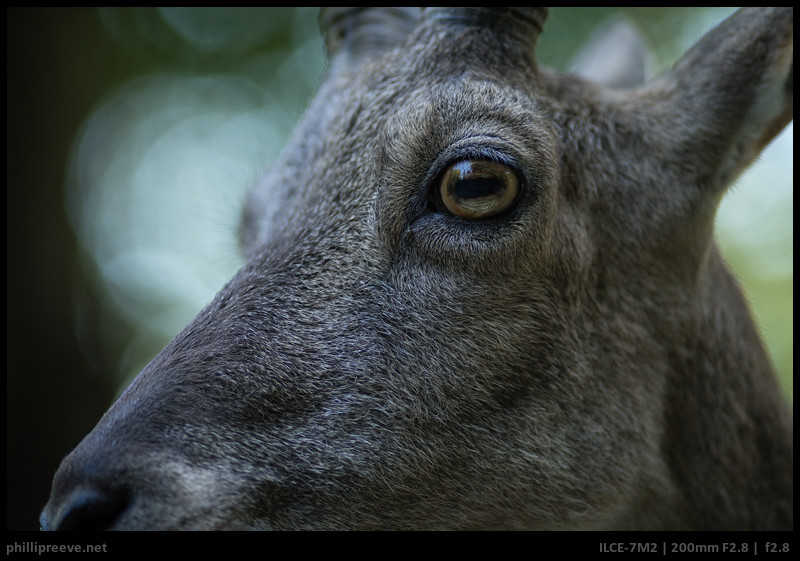
Since the Minolta has straight aperture blades out-of-focus highlights are a bit edgy stopped down.
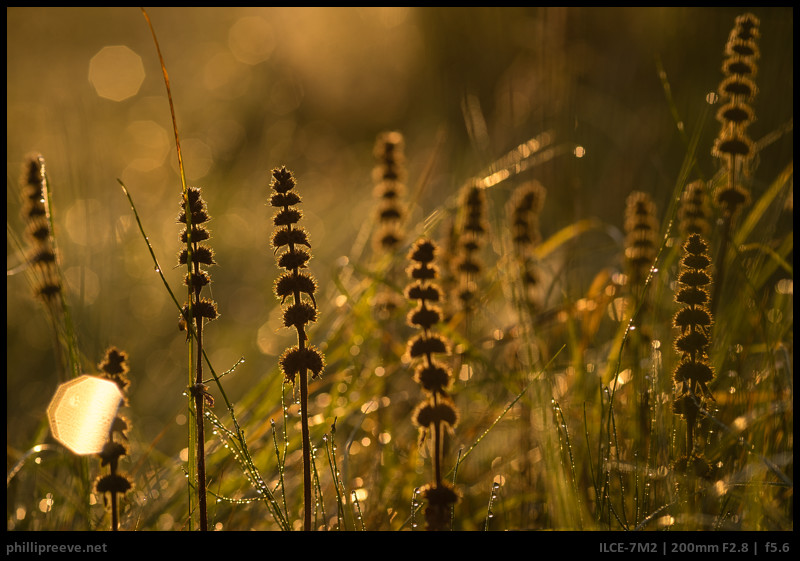
Sunstars
Not a strength of the Minolta.
Sharpness
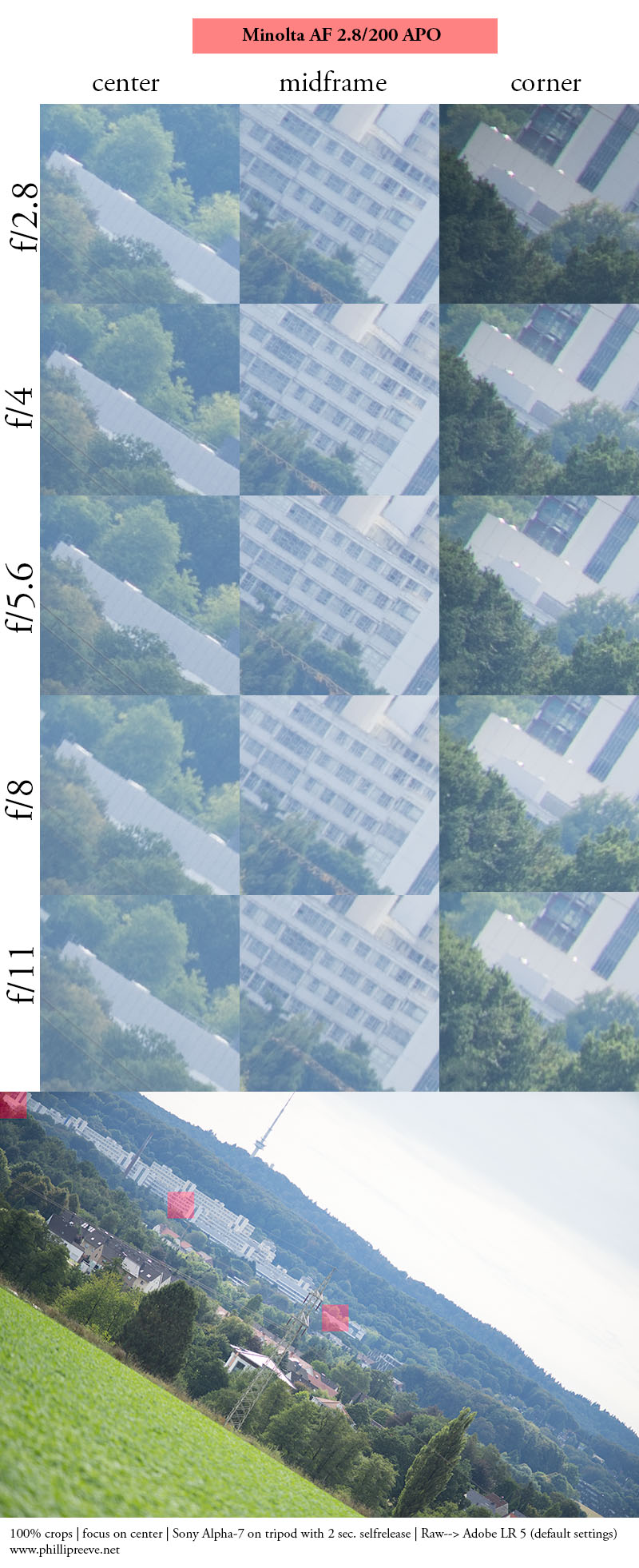
The full aperture series can be found in my flickr Zeiss Makro-Planar 2/100 album.
My testing conditions weren’t ideal because of the heat but the results are consistent with Bastian’s comparison and Photodo’s MTF curve none the less.
f/2.8: Very sharp across the frame, corners are nearly as sharp as the center.
f/4: Excellent in the center, corners improve a little.
f/5.6, f/8: Excellent across the frame
f/11: A little less sharp due to diffraction.
The Minolta AF 200mm f/2.8 turns in a remarkable performance here.
Applications
The Minolta lends itself to a wide range of applications.
I used it quite a bit for landscape photography. If you nail focus results are great but focusing can be a challenge and I had quite a few images with less than ideal focus which I would have nailed with a good manual lens.
For portraits you can isolate a person’s upper body completely from the background or even isolate the whole person from it’s surroundings. Because the bokeh is great and it’s sharp across the frame you aren’t limited in your composition but you should allow some time for the focusing.
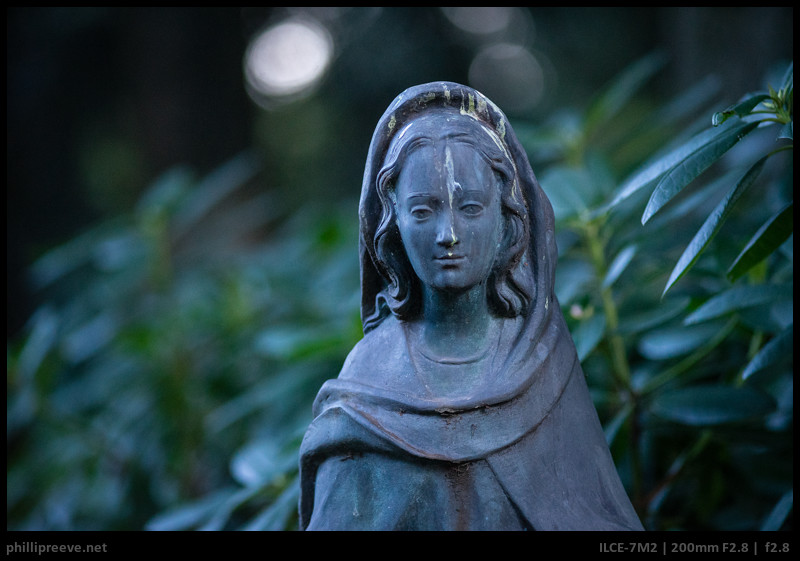
At least on the Sony a7 series I wouldn’d recommend this lens for sport photography because the LA-EA4’s focus points are all very central and when I tried to track a somewhat distant flying gull it failed me most of the time. I really hope that Sony will release a LA-EA 6 adapter with the much better AF module from the a77II/ a99II which would turn the Minolta 2.8/200 into an even more versatile lens.
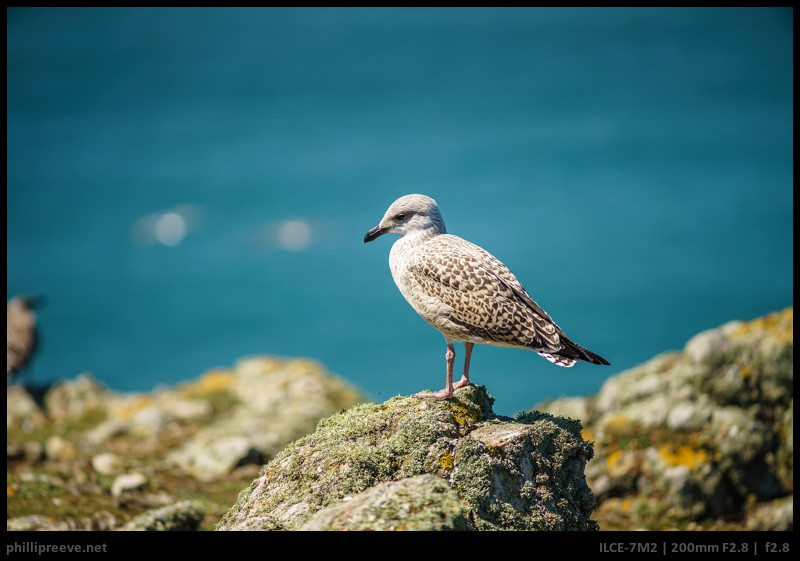
I think the Minolta can work very well in a kit with a 24mm, 50mm and 100mm lens and I would choose it over a 4/70-200 most of the time.
Alternatives
Canon EF 2.8/200 L USM: I think performance wise the Minolta is a bit better but the Canon will offer quieter and smoother AF and a more pleasant manual focus experience because of it’s USM drive.
Mamiya 2.8/200 APO: Being a medium format lens the Mamiya is quite a lot heavier and it has a minimum focusing distance of 2.5m but I suspect that it’s CA correction is superior.
Nikon Ai-S 180mm 1:2.8 ED: The Nikon is much more affordable and a pleasant to handle MF lens and it’s performance in the center is similar but it can’t keep up in the corners and has a longer short focusing distance.
Conclusion
pros
|
average
|
cons
|
Optically the Minolta’s performance is stunning, even by today‘s standards. It is very sharp from f/2.8 even in the corners and only gains a little as you stop down. Bokeh is very smooth. CA are corrected well but certainly not perfectly.
Of course there is a catch, the Minolta AF 2.8/200 APO it is the focusing experience. AF with the LA-EA4 is fast but not very reliable and manual focus suffers from the short focus throw and very little resistance as well as the play of the focusing ring. I could work around it most of the time but not always.
Apart from the focusing handling is great, the lens is built to very high standards and cleverly engineered, I wished all tele lenses had such clever lens hood. It isn’t small but well balanced and it still fits in most camera bags easily.
The Minolta is no bargain but not expensive either, especially if you consider the wide range of applications.
All in all, I enjoyed using the Minolta AF 200mm 1:2.8 APO a lot and the great optics made me forget about the focusing issues (most of the time).
The Minolta AF 2.8/200 usually sells for around $550 used at ebay.com (affiliate link).
In Germany you can buy it used for around 700€ at ebay.de (affiliate link).
If this review was helpful to you, please consider using one of my affiliate links. Thanks 🙂
Minolta AF 2.8/200 Sample Images
All images are processed in Lightroom from Raw. Many more full resolution samples in my flickr Minolta AF 2.8/200 APO album.
Other Articles
- Manual lenses on the Sony a7 – a beginner’s guide
- 15 affordable manual lenses for the Sony a7 series
- Our other lens reviews
This site contains affiliate links. If you make a purchase using any of the links marked as affiliate links, I may receive a small commission at no additional cost to you. This helps support the creation of future content.
Latest posts by Phillip Reeve (see all)
- Review: Samyang AF 75/1.8 FE - April 12, 2021
- The FE-List now has 113 lenses on it - March 25, 2021
- 2020 – Year’s end review - December 28, 2020
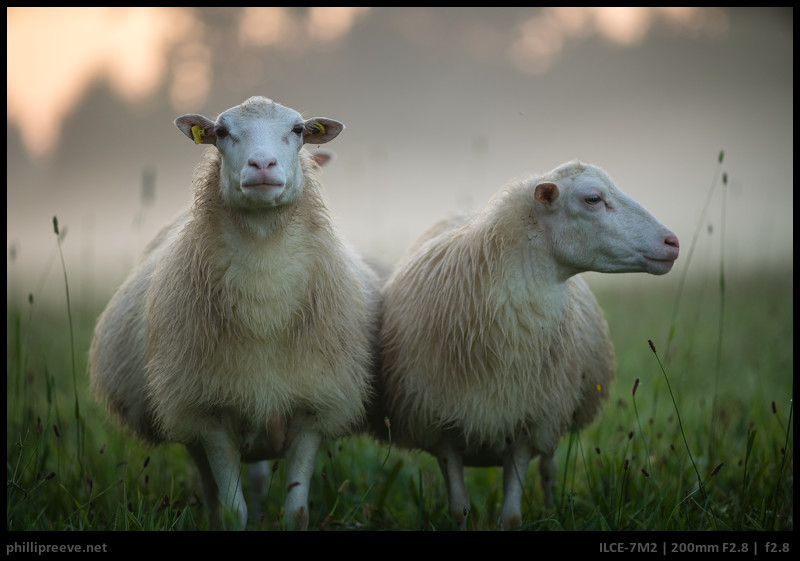

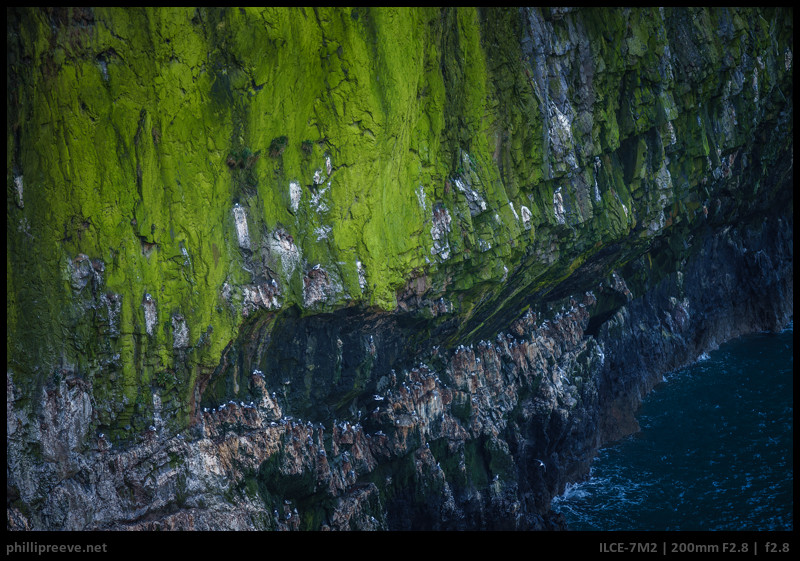

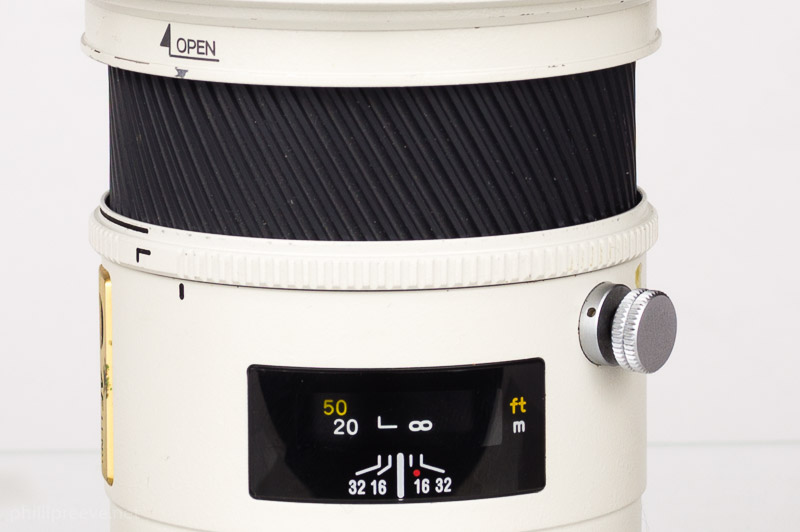
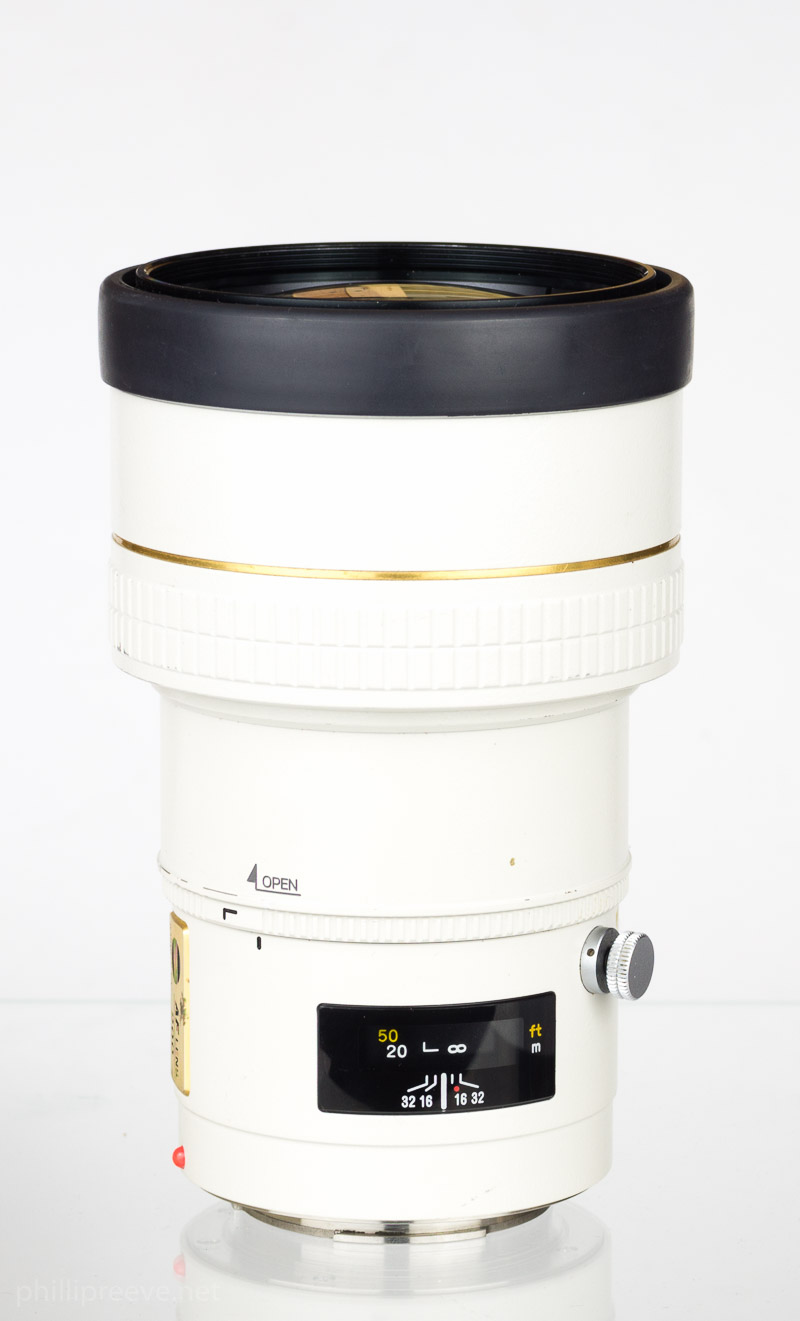
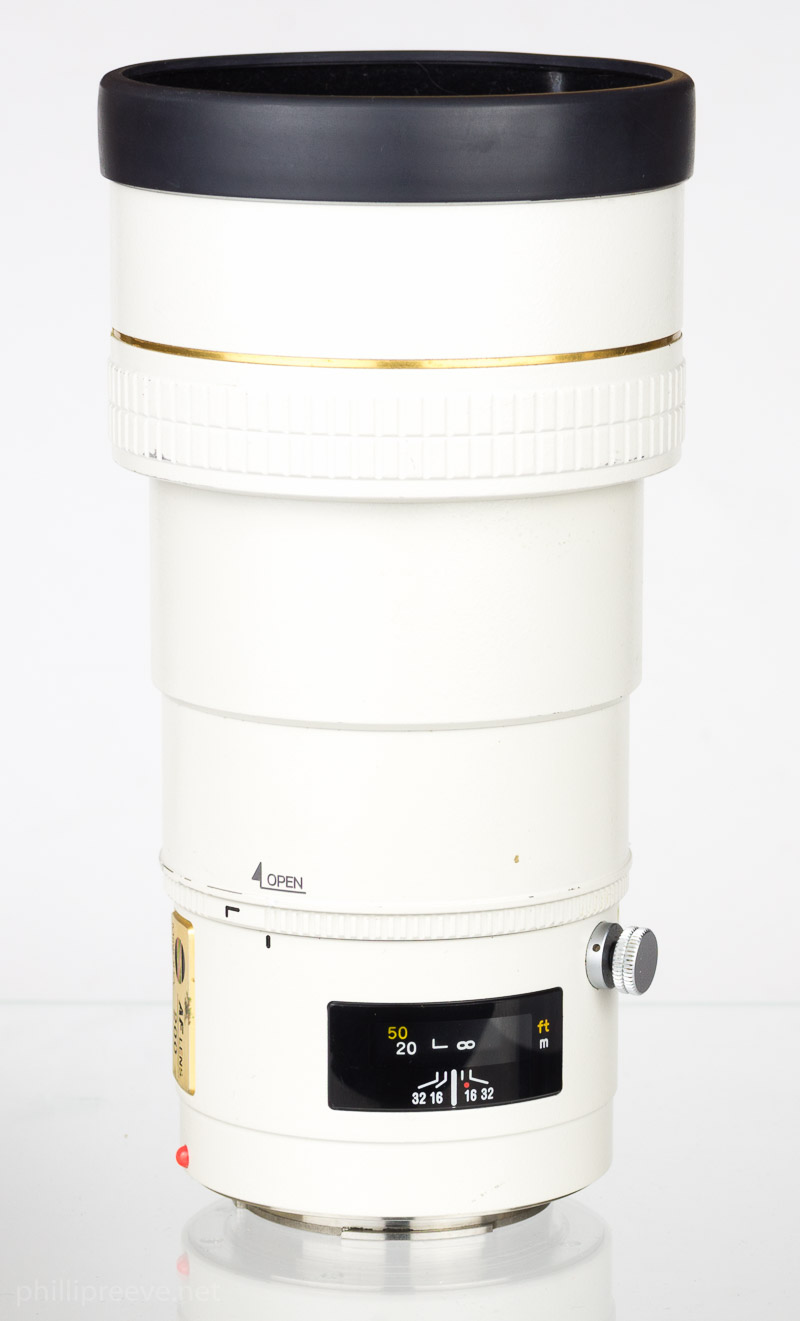


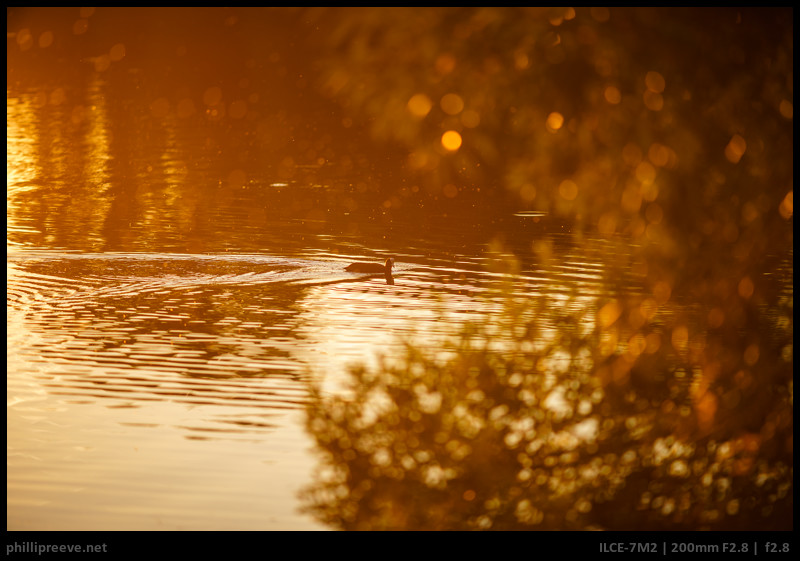
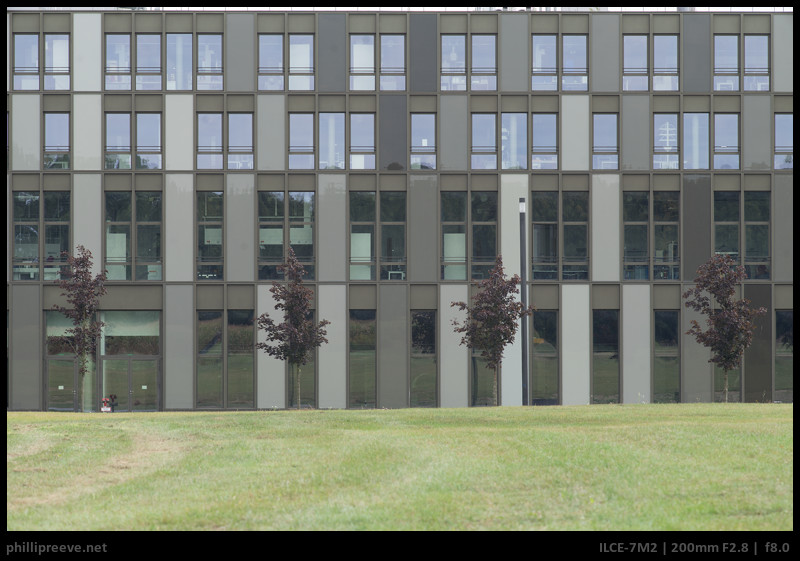
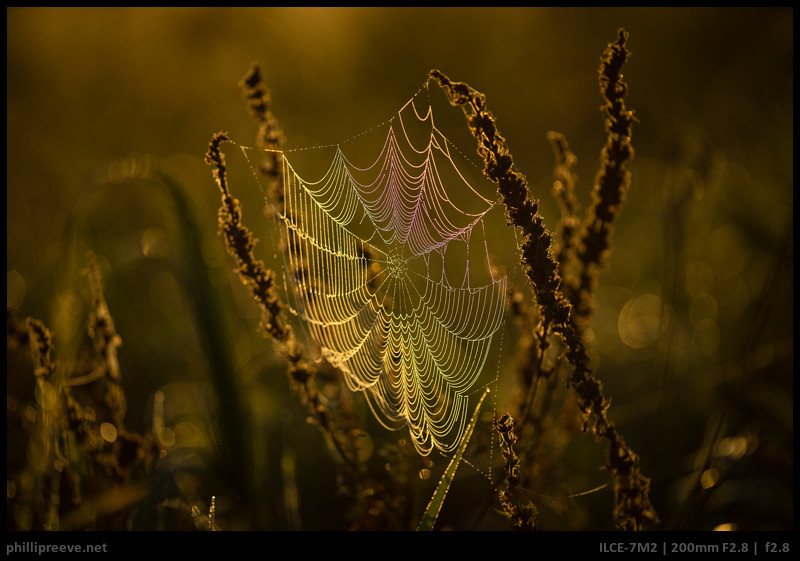
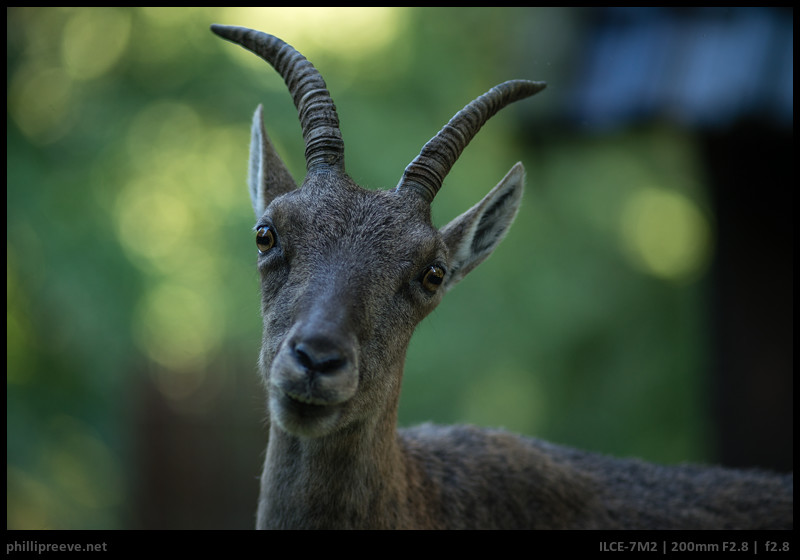
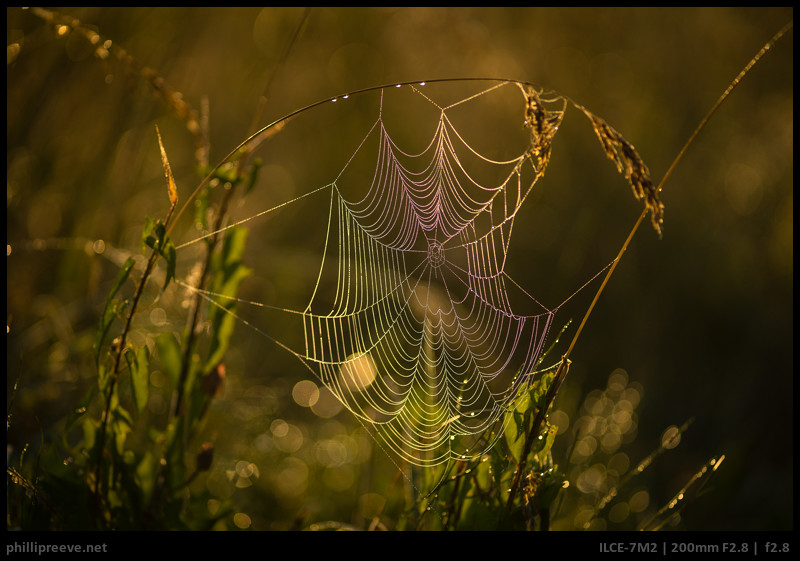
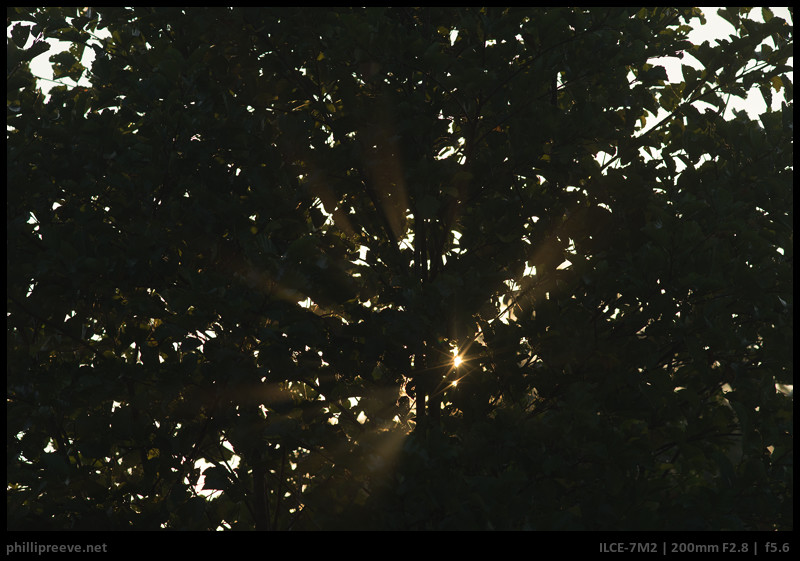
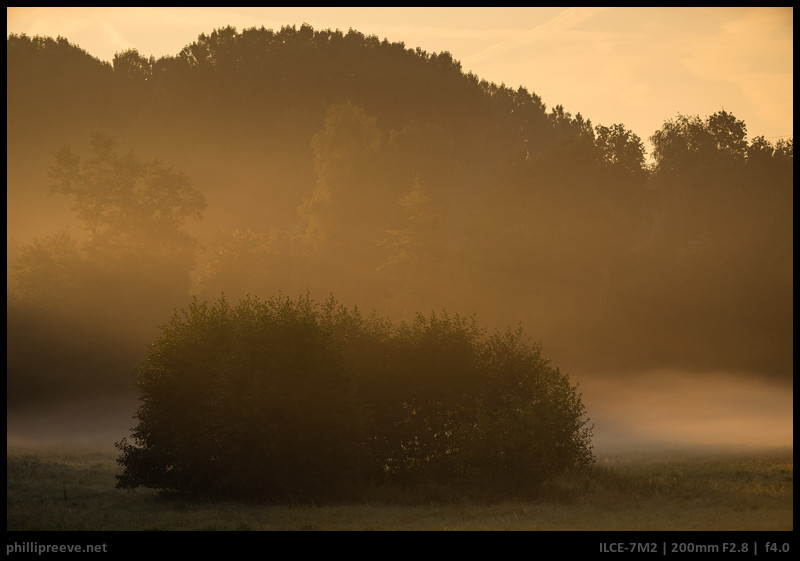
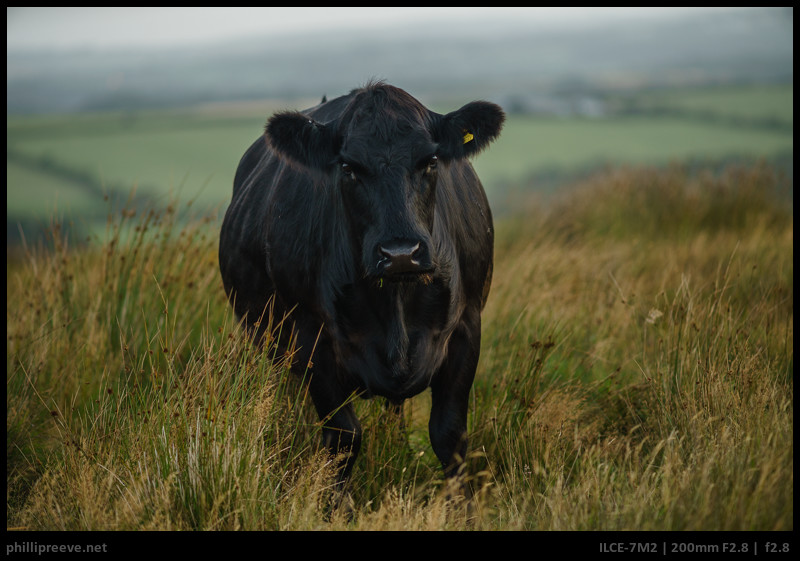
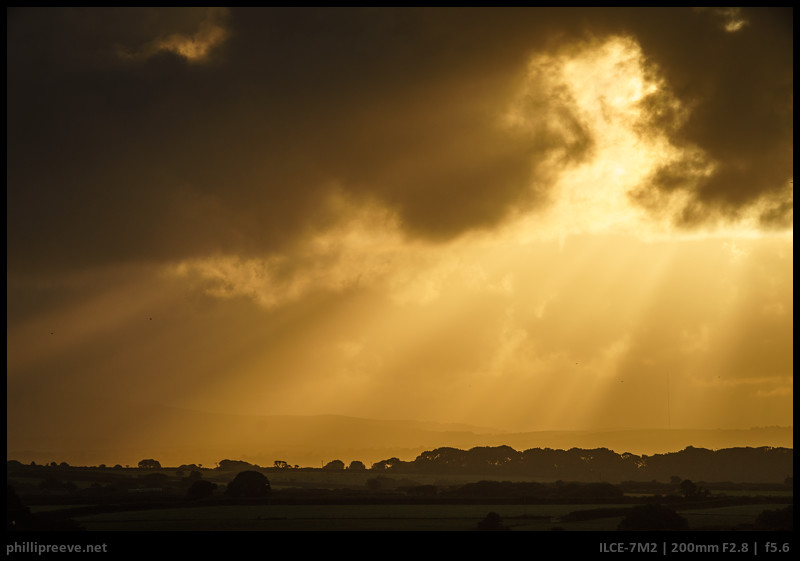
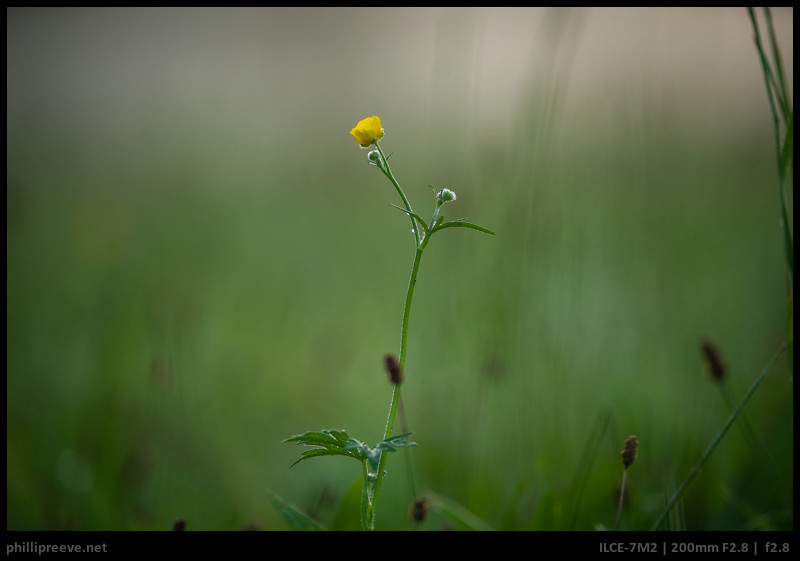
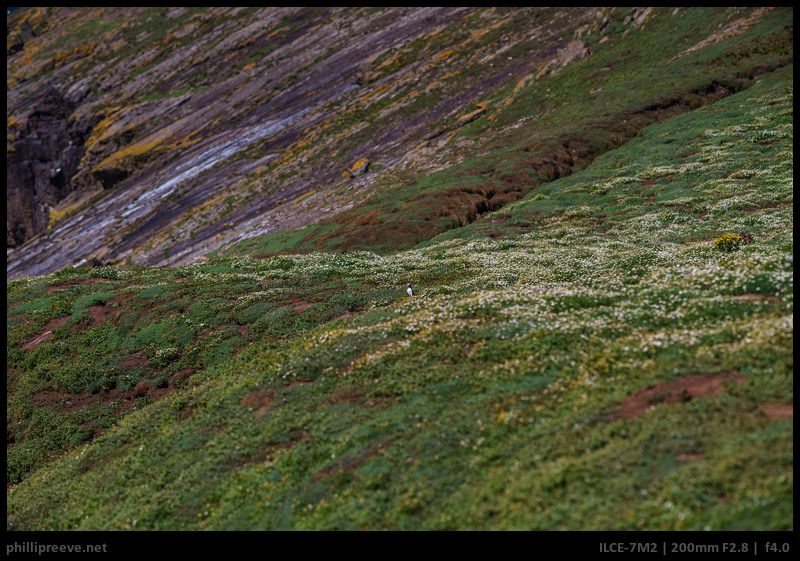
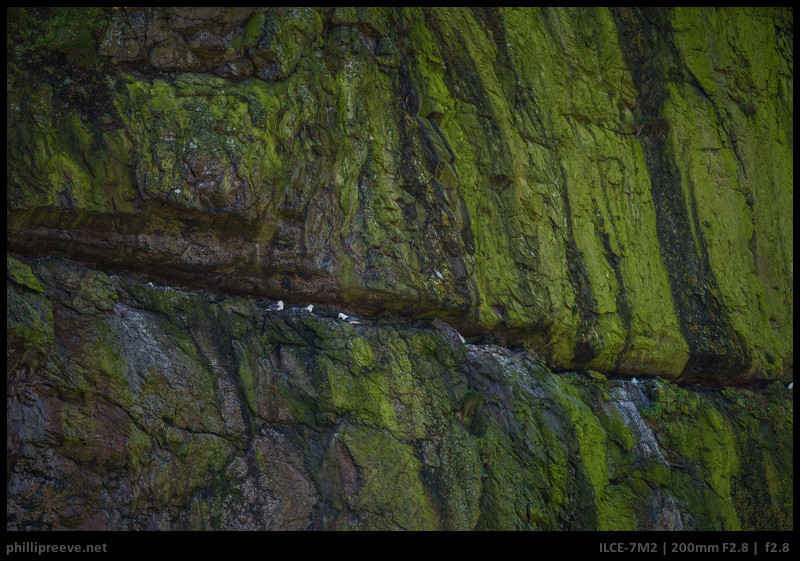
Hi Phillip,
so you ditched the a7 for the mark II?
I still have it but rarely use it, so yes.
I just got this lens in my hands to try it out when I thought, lets check if you guys tested this lens already. And there it is! Thanks!
hehe, good timing then 🙂
Nice review.
But any idea about coma ?
And a lot of people are talking about the f3.5 because it’s good performance for astrophotography.
Is this just for it’s lack of any coma or for something more ?
Friendly greetings
No idea about coma, sorry. Which f/3.5 do you mean?
Sorry but it was actually the Leica APO-Telyt-R 3.4/180mm I was referring to. Was in hurry and that’s never good…
Yes, this is a benchmark lens especially if the reviewed lens has the word “APO” in it.
La coma en las estrellas se produce por el efecto de la rotacion de la Tierra. Hay aparatos para el trípode que compensan . Busca manuales de astrofotografía.
I imagine you’ll need to use the AF micro adjust setting on the A7 to get it to play nice.
Alan: If the AF issue was consistent then yes. I find that it helps a little but the LA-EA4 completely bombs or just slightly misses contrasty targets anyway quite often. I doubt it’s this copy of the lens or adapter: http://www.exposedmoment.com/2014/05/battle-of-200mm-on-a7-minolta-apo-high.html
Another problem is as Phillip mentions that the AF points are clumped in the middle as the AF module is the SLT A55’s or something akin to it.
Still, when it hits (or you manually focus it and hit) the results can be stellar, as this talented reviewer has shown. It’s good to have a couple of own experiences and doubts verified so cheers for this review.
Also, if someone is on the fence about sending a lens to these gentlemen for testing I’ll say that no lenses or adapters were harmed in the production of this review : )
I often got sharp results, it wasn’t that it was consistently front- or backfocused. The results were all over the place.
I can confirm this – bought the lens a while back for portraits with LA-EA4, but AF on the eye was quite random and could not be improved by microadjustment.
Had to send it back, quite a shame as everything else was perfect.
Thanks for the review. I’ve had the Minolta 200 on my a900 since 2009 and your shots confirm the performance of mine.
I do find the resolution to be good, but do find the contrast, in typical Minolta style to be not outstanding, especially compared to the 135za.
Great article as usual! I wanted to ask you about the weight of the lense. I have realised those objectives are very heavy and by using a tripod I am afraid the ring of the a7 might suffer of the leverage effect…..any comment on that?thanks!
Both the LA-EA4 and LA-EA3 have their own tripod mount so you don’t need to worry about the leverage effect.
I’ve heard and read about this model but bought a Minolta 80-200/2.8 APO HS today which was a stable mate of this prime. Like this 200, I am looking forward to a pleasant experience with it.
Hi, I have been folowing your site for quite some time , I enjoy it a lot.
I have a A7 ,the sony adapter( 4) and i have a minolta beercan 70-210 and a minolta 400mm f5.6, with the sony a6000 they worked fine but with the A7 they work but when my finger is not on the shutter button they keep on trying to find focus.(?). Can you explain me why this happens( if you know of course) and how to solve it. Thank you and keep on the good work!
Do you have eye af activated?
HI,
I read your very interesting report on the 200 APO. Too bad you did not process the 2.8 Macro which I will use for the slides ….
I was a fan of Minolta … formerly with the X700 and a MD Rokkor F 50 2.0, it was with this device that I took the slides. I tried the MD 50 2.0 on the Sony Alfa with an MD ring > NEX and extension tubes. It works but everything is manual …. So I buy second hand AF 50 2.8 Macro for 90 euros in Japan.
I suppose this is a good and very sharp one
Is this lens used with a full frame or crop sensor sony
I used the fullframe Sony a7ii for this review
to use this lens on manual with an A7s will i still need an adapter ?any problems using this for astro work ?
Yes, the LA-EA3 (no AF) or the LA-EA4 (AF)
I haven’t used it for astro
With the Minolta “White G´s” – 200mm and 80-200 HS and etc., you have an example where the performance with with my A77II and A99/A99II is absolute superior to the A6000/A7 with series with LA-EA4, when it comes to AF/accuracy – close to every single shot is razor sharp!
On my A6000, i have the same experience as you, AF/sharp-wise!
In the Alternatives section you mention the Mamiya 200mm f/2.8 APO for 645 medium format. I would love to hear more about this lens. Online reviews of this lens are extremely difficult to find.
Since it’s a medium format lens weighing more than 1.1 kg, it is much heavier and quite bulky. However, at $1100, the price is attractive if it can indeed deliver the outstanding optical qualities.
An online review says the Mamiya is sharper than the Canon EF 200mm f/2.8 L II and the Canon EF 135mm f/2 L [1], which is impressive considering Bastian’s very positive review of the Canon 200mm lens. A Chinese review site indicates the Mamiya resolves 64 line pairs per mm in the middle and 40 lp/mm in the periphery at f/8; it resolves 45 lp/mm in the middle and 32 lp/mm in the periphery wide open [2]. Dr. Carlo Kopp has provided some sample images, including 100% crops of photos taken with a Nikon D800, but the images do not seem very impressive — and for some reason the photos were all taken at short distances with very high ISO [3].
As a bonus, the Mamiya allows the use of the Kipon Mamiya-Nex Baveyes adapter to turn it into a 135mm f/2 lens.
References:
[1] “The Mamiya 200mm F2.8 is sharper wide open than either the Canon 200mm F2.8 L USM Mark II or the Canon 135mm F2 L USM.” — http://www.pebbleplace.com/reviews/medium_format/mamiya_200mm_apo/page_1.html
[2] https://tuchong.com/popphoto/5mamiya645
[3] http://users.monash.edu/~ckopp/Mamiya-Samples-200mm-f2.8-APO.html
I am personally interested in this lens, especially as vignetting should be less pronounced on fullframe
which might yield significantly better bokeh with no Cat’s eyes.
But so far couldn’t justify paying the price to find that out.
Hi will the Minolta 200mm f2.8 will work on the Sony a6000
With the LA-EA4 adapter.
Thank you I am shooting with the sigma 16 1.4 and the Sony 85 1.8 with Minolta 200 mm f2.8 it will save me some money with LA-EA4 adapter keeps my cost down thank you
Also check out the Canon EF 2.8/200
Hi I check out the canon 200 f2.8 it’s perfect images all so thank you
Hi thank you for all your help on the Minolta and canon 200mm f2.8 lenses with the lense I have the sigma 16 1.4 & Sony 85 1.8 lens . I was wondering about the 80-200 Minolta instead of the two of 200mm Minolta or canon for telephono lense thank you
I have no experience with it but here I would probably prefer to get a Canon lens as well because of the screw driven AF. Also depends on your camera.
Hi I am shooting with the a6000 which has fast af thank you
Hi LA-EA4 will it work with the canon 200 f 2.8 on my a6000 what adapter do I need thank you
No, won’t work. Please read our adapter guide.
There are some amazing deals on Minolta Apo 80-200 F/2.8 lenses on ebay, under $500. I’m just not sure whether to go the Canon or Minolta adapter route. They say Sony bought Minolta, and that it is more native than Canon/Nikon lenses. But I’m also thinking that fixed 200mm lenses give better results than zoom types at 200mm. Would be good to hear if you tried this already.
The issue with it is the same as with the 2.8/200 APO: Because AF is screw driven aquiring focus is little fun even though optical performance might be fine.
But not with a proper A-mount camera. That’s what the lens was made for. The LA-ea4 just doesn’t compare.
This was one of my first prime lenses together with the Minolta 20 mm 2.8 AF (which you haven´t tested yet???? why?).
In the Sony A-Mount it is hard not to come across this lens, since it is some kind of a “legend”.
The great thing with this lens is, that it pritty much doesn´t matter which aperture you choose. You can use F2.8-F11 with no bad feelings. This makes it very versatile. I simply love this lens.
First I have used it with my A57, but on full frame, it really shows its potential. Now I use it with the LA-EA3 and my A7II. You are right. manual AF can be tricky. You really need your time, but I am ok with that.
For this lens only a A99 II would be a satisfying solution. Then you would have a good AF with outstanding optical results.
I didn’t try amy other Minolta AF lenses because of the annoying focus on the a7.
That´s true.
I only keep the Minolta 200 2.8 APO because of it´s great image quality, the Minolta 100 2.8 Macro because I don´t need AF on a Macro and the Minolta 20 2.8, because in landscape photography 20 mm is a nobrainer. Just set it on F11 and infinity (or a bit bevore infinity) and you are good. There´s no effort to that.
Theese three lenses keep me from buying expensive E-Mount lenses (1500 Euro Loxia 21, 1000 Euro 90 Macro and 2500 Euro 70-200).
Your notion regarding the combo with this lens and the a99 II is absolutely correct. It’s heaven. Plus, toss in the availability of more reach with no penalty using the 1.4x teleconverter (I actually have the Sony) and it’s bliss. The lens was made to work on A-mount. Learning the focus limiter by means of the manual (Kurt Munger’s site) helps a lot for fast-moving subjects. When everything is made to work together with no adapters, there’s less lag in all operations. The autofocus experience with a full-frame A-mount camera is just what you’d want it to be. The image quality with the a99 II and the 200G is startling. Loving life here.
Thanks for this detailed review. Hopefully I can still comment & ask a question on this older review. I have the manual focus MD 200mm f/2.8. Have you ever tried it or compared it to the APO 200? I’m wondering how it performs in comparison. I suspect they do NOT share an optical formula.
I’m considering upgrading for the AF, but given your comments on the LA-EA4 (I have that adapter + the A7R2) and those of others, the older MF 200 might be the better choice.
Is it worth the cost to use the APO 200 only in manual focus? I am curious if you or anyone you know has compared the older MF and the APO.
I didn’t compare them, but I can assure you the focus ring of the AF APO is not meant to be operated manually.
Very little resistance, very hard to properly set focus.
Thanks – the MD version is easy to focus, which I suppose is obvious :).
Hi, thank you for your detailed reviews. I am now planning to buy Minolta AF Apo 80-200mm and LA-EA4 adapter for my A7 ii. Other reviews state that autofocus can work correctly with this combo using special settings on A7.
Your pictures of sheep and rock cliffs look incredibly sharp and I could never get this much detail on my A7 ii so far, too much pixelation. I am new to this so maybe I am doing something wrong with my camera settings or raw image files.
If that’s the black version then it’s pretty famous for its good optics, whereas the white HS is rather compact for a ~70-200 2,8 (as well as supposedly good optically). Especially the HS is known for its violent AF..it depends on what you are used to and like, if you’ve already experience with the early days of AF and don’t mind them then the only possible issue would be the slight shutter delay that the LA-EA4 introduces. Not everybody minds/notices, so you may actually score yourself a bargain. Let us know. Micro-af adjust is possible with the LA-EA4 but for a zoom harder and I couldn’t make the 200 2,8 AF consistently anyway. I will say that what shots were in focus were potentially very good.
does violent focus mean out of focus images or just rapid jerky operation? I don’t mind the last. From what I judge in this article, any Minolta Apo tele AF is difficult to focus manually due to small rotation angle, so if AF is bad with this combo then maybe I have to reconsider and go with a purely manual tele.
That’s not a correct assumption. The 200 f2.8 is very agreeable to manually focus with plenty of travel-somewhere in the neighborhood of sixty degrees of travel. The “High Speed” versions of the lenses of this era increased the gearing ratio of the AF gear inside the lenses. Thus, the “violent” refers to the sensation in the hand when you feel the torque being applied to the gearing for focusing. It can be as accurate as anything out there on the market, depending, like with all lenses, how much light there is to work with. I use this lens on a Sony a99 II and it is a dream come true from the past. I was a Minota shooter in the film days going back to my first Minolta in 1972. It was the Hi-Matic E. With regard to this 200 f2.8, if you have an A mount camera, get one. Your life will improve, I promise. NOW, it’s a bargain, too.
60° are not plenty (especially taking into account the small diameter of the focus ring) and the resistance of the focus ring is so low, it is a pain to focus this lens manually.
I bought the Minolta HS 80-200 APO and L4A-EA4 in Japan, while on vacation here. Both seem to work great, don’t mind the “violent” AF and didn’t notice a shutter delay from the adapter. Also didn’t notice that AF didn’t focus properly as Philip mentioned. The images were always sharp to the pixel limit.
what do you mean by pixelation?
As said before: Optically it is a solid lens but because of AF I would probably choose a Canon lens in that situation because of much more convenient AF.
By pixelation I meant something unrelated to Minolta Apo tele. Just a general comment about your photos, they look so crisp even at very close zoom. On the sheep for example you can see every little hair strand.
But after playing around with my A7ii, and zooming to same level I noticed it’s just my skill level, my plastic kit lens, and how my desktop viewer renders the jpeg.
I will try the Minolta AF Apo 80-200mm and maybe make a youtube review. But I’m completely new to this so it may not be high quality.
So I bought both the Minolta 80-200 Apo High-Speed and the LA-EA4 adapter here during my stay in Japan. The AF seems to work great, very fast, maybe “noisy” as people call it, but the pictures are always sharp. Didn’t have issues where the AF didn’t focus to the pixel limit. What particular flaws regarding the AF should I look for? I will post a link to a few photos later. I do see a bit of a bluish halo on some objects at the frame edges.
Here is a photograph with Minolta AF 200mm 2.8 APO G (HS) (1988) + Minolta AF II Apo 2x Teleconverter (1988)
on the Sony A77 Mark II (ie 600mm out of hand)
http://www.alles-im-bild.de/open_pictures_522312212582-Prachtlibelle(calopterygidae)_2018-278_1500px.jpg
It would have been helpful to actually test the lens on a proper A mount full frame camera without the adapter. The autofocus issues would have disappeared on either an a99 or a99 II..
Maybe helpful to the few people who use this dead mount.
Maybe this lovely lens will come to new life with the new Sony LA-EA5 Adapter for E-Mount ?
I have already checked used prices today.
Probably smarter to get a grey market Tamron 70-180mm 2.8.
Minolta 2.8/200: ~500-700€
LA-EA5: 300€
Weight: 790g + LA-EA5
VS:
Tamron 70-180mm 2.8: 1100€
810g
I have Minolta 300 2.8 non hs and ea5 on a7riv. It is superior when autofocusing to a77ii 80-200 hs i had last year. Image quality of prime is also a bit better I’d say. A7riv has many more focus points, but what helps a lot is tracking a subject. Last year I had a7riii and without tracking sports photography is tougher.
That being said I also have sony 135 1.8 gm and the sharpness of it is crazy even compared to Min 300 2.8 :).a7riv has too many megapixels for old glass.
Hi,
I have started using the Minolta AF 200 f2.8 APO with the LA-EA4r. Focusing is not smooth but results are fantastic on still subjects: no backfocus, no light stealing mirror. Focus speed is not really there but it may be due to the A7II body.
Will post updates, if they’re worth it, in the next months.
J’ai cet objectif depuis des années. Je peux enfin l’utiliser avec un Alpha 6600 grâce à l’adaptateur sony la-ea5. Je peux vous informer que la mise au point est rapide et précise.
Bumping this review I read a lot till I got my HS sample 2 months ago.
Using it with an A7RV and LA EA5.
AF is great, mostly, with the usual notion for screwdrive lenses that going from one end to the other of the scale will be slow. SSM lenses will always have the edge in those cases.
But if the subject is not on the opposite end, it will aquire focus fast and will stick to it really well. Every tracking works as well:)
Btw with these adapters there are not much difference between non-hs and hs lenses because the in-body motor has bigger torque than the film slr era bodies ever had.
Optical performance is in line with the review as far as Ifelt, though mostly I’m not a pixel peeper. And with this in mind even I noticed while cropping some landscape photos that in good lightning conditions how sharp the lens it was, even on 60mp. Of course it wont drive the sensor to its limit, but wow.
BTW the EA5 can be bought on the used market and outlets as well, and that drove down the prices, I get mine from calumet germany for around 200EUR
Are the Teleconverter still incompatible with the La-Ea5 adapter?
Don’t think anyone here is using the LA-EA5 adapter.
Leventebandi seems to use it.
i still couldn’t sell this lens. Even with the Batis 135, which replaced it, I want to keep it. Some day there will be a replacement for my A7r III and then I will buy the LA-EA5 for sure.
did you do post process in the photos result? especially on the first photo.
That one does not look heavily edited to me.
I know that so much time has passed since this review, but I was wondering if anyone would know how far 200/2.8 APO and 80-200/2.8 APO at 200mm are in terms of optic quality or sharpness. Thanks